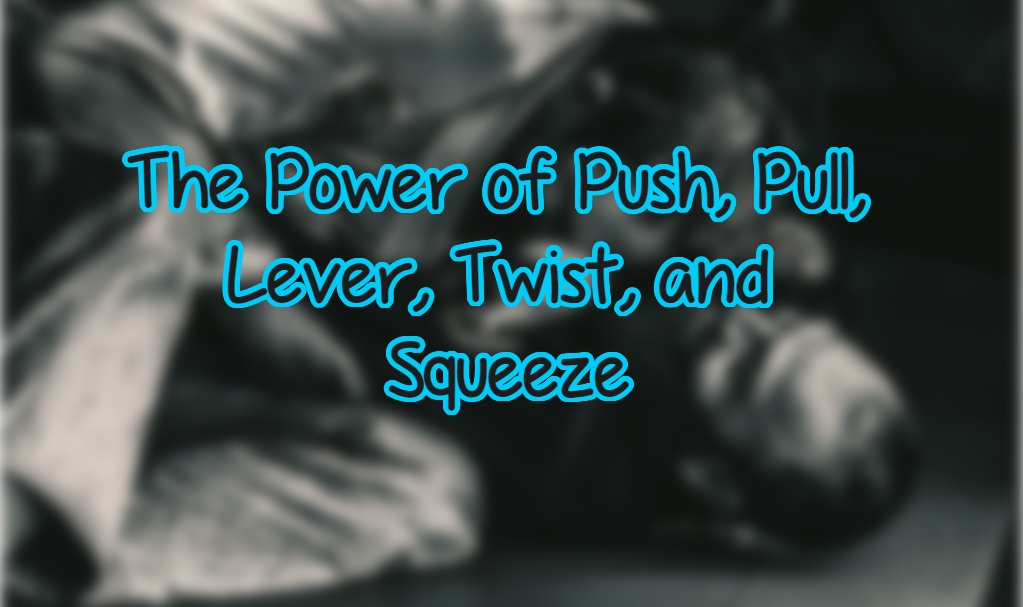Elevate Your BJJ Game: The Power of Push, Pull, Lever, Twist, and Squeeze
Brazilian Jiu-Jitsu (BJJ) isn’t just a martial art—it’s a strategic dance of control, leverage, and technique. Central to this dance are five movements that form the backbone of BJJ: push, pull, lever, twist, and squeeze. Mastering these can transform your game, making you a formidable opponent on the mat.
Push: More Than Just Force
- Role in BJJ: Pushing isn’t just about exerting force; it’s a strategic move to create distance, defend, or set up attacks. It’s the key to escapes from positions like mount or side control.
- Benefits: Beyond aiding in escapes and guard retention, a powerful push strengthens the chest, shoulders, and triceps.
Pull: Drawing the Opponent In
- Role in BJJ: Pulling is the art of positioning. It’s about bringing your opponent where you want them, especially in guard techniques like the closed or spider guard.
- Benefits: A robust pull not only enhances your guard game but also bolsters back, biceps, and forearm strength.
Lever: The Art of Leverage in BJJ
- Role in BJJ: BJJ thrives on leverage. Using limbs as levers, you can control or even submit opponents, as seen in techniques like arm bars or kimuras.
- Benefits: Leverage is the great equalizer, allowing technique to triumph over sheer strength.
Twist: Generating Power and Control
- Role in BJJ: Twisting is central to many BJJ techniques, from chokes to joint locks. A simple rotation can be the difference between control and being controlled.
- Benefits: Beyond power, twisting is pivotal for core strength and flexibility, essential for moves like the guillotine choke.
Squeeze: The Final Lock
- Role in BJJ: Whether it’s a triangle choke or maintaining control in side control, squeezing is the clincher in BJJ.
- Benefits: Squeezing not only ensures control but also builds isometric strength in the core, legs, and arms.
BJJ is intricate, but its foundation lies in these five movements. They’re not just techniques; they’re principles. By honing these, you’re not just learning moves—you’re building a robust BJJ foundation.

